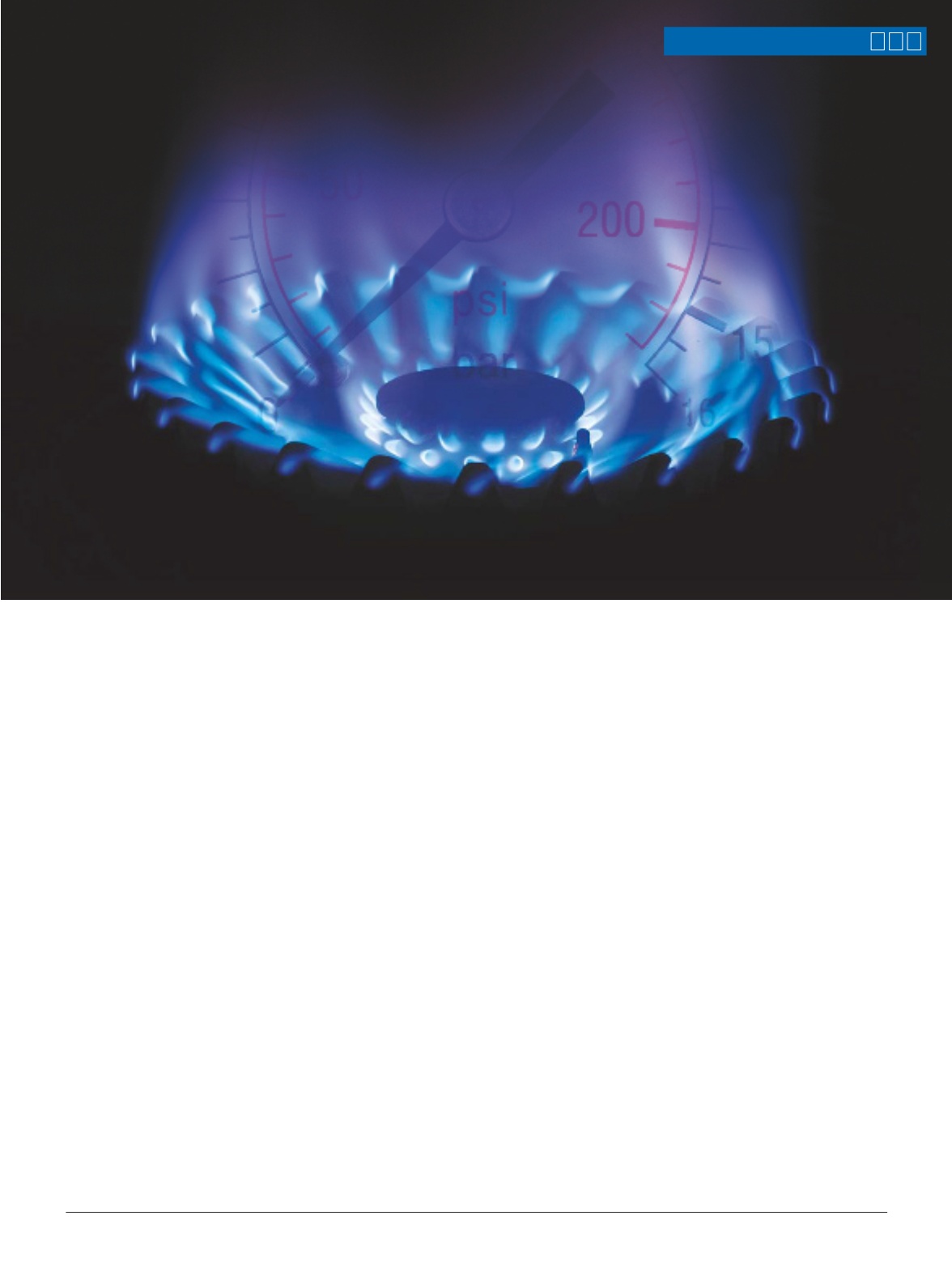
iLÀÕ>ÀÞÊÓä£{ÊU Ó
@K @J 8 N<CC$BEFNE 8E; 8::<GK<;
practice to perform a leak test on all new
propane installations. However, to ensure
the continued safety of existing propane
installations, the importance of performing
a leak test during all interruptions of service
cannot be over-emphasized.
An interruption of service is any time
that there is not enough pressure for the
appliances to operate. An interruption
of service can be when regulators are
changed, a tank is changed out, an “out of
gas” situation, or any time the tank valve is
turned off.
The National Fuel Gas Code [NFPA
54] is an excellent source for information
on this subject. The text below is reprinted
from the 2012 edition and spells out the leak
testing requirements. Follow these rules,
and always check with the local authority
having jurisdiction for other requirements.
/%(%, ;<K<:K@FE F= C<8BJ 8E; ;<=<:KJ%
8.1.5.1 The piping system shall withstand
the test pressure specified without showing
any evidence of leakage or other defects. Any
reduction of test pressures as indicated by
pressure gauges shall be deemed to indicate
the presence of a leak unless such reduction
can be readily attributed to some other cause.
8.1.5.2 The leakage shall be located by means
of an approved gas detector, a noncorrosive
leak detection fluid, or other approved leak
detection methods. Matches, candles, open
flames, or other methods that provide a
source of ignition shall not be used.
8.1.5.3 Where leakage or other defects are
located, the affected portion of the piping
system shall be repaired or replaced and
retested.
/%) G@G@E> JPJK<D C<8B :?<:B%
8.2.1 Test Gases. Leak checks using fuel
gas shall be permitted in piping systems that
have been pressure tested in accordance with
Section 8.1.
8.2.2 Before Turning Gas On. Before gas is
introduced into a system of new gas piping,
the entire system shall be inspected to deter-
mine that there are no open fittings or ends
and that all valves at unused outlets are closed
and plugged or capped.
8.2.3* Leak Check. Immediately after the
gas is turned on into a new system or into a
system that has been initially restored after
an interruption of service, the piping system
shall be checked for leakage. Where leakage is
indicated, the gas supply shall be shut off until
the necessary repairs have been made.
While the code specifies when a leak
test must be performed, it does not say how
to do the test. NFPA 54 2012 does list three
methods in Annex C.3, but the Annex is
not part of the code. There are four basic
methods of conducting this leak test using
propane as the pressure source. The first is
at the tank valve, the second is downstream
of the second stage regulator, and the third
is between the first and second stage regula-
tors. The fourth method is at the vapor
meter, if one is installed. Because of the
various types of vapor meters, that type of
leak test won’t be reviewed here.
For detailed instructions on how to
perform all of the different types of leak
tests, refer to the Propane Education and
Research Council’s CETP course “Placing
Vapor Distribution Systems and Appli-
ances into Operation.” You can find it at
C<8B K<JK@E>
Briefly, the steps for completing the
most common types of leak tests in propane
system are as follows.
At the tank valve, the service valve is
closed and a 0-300 psi pressure gauge is
installed between the service valve and the
inlet of the first stage regulator. The service
is opened to pressurize the system, and
then closed. Enough pressure is released
to lower the gauge reading by 10 psi.
If the reading stays the same for 3 minutes,
the system can be assumed to be leak free.
If the reading increases, the service valve
K\jk ]fi C\Xbj N_\e J\im`Z\ @j @ek\iilgk\[
By Bruce Montroy, Bergquist Inc.
:fek`el\[ ¿
Propane


